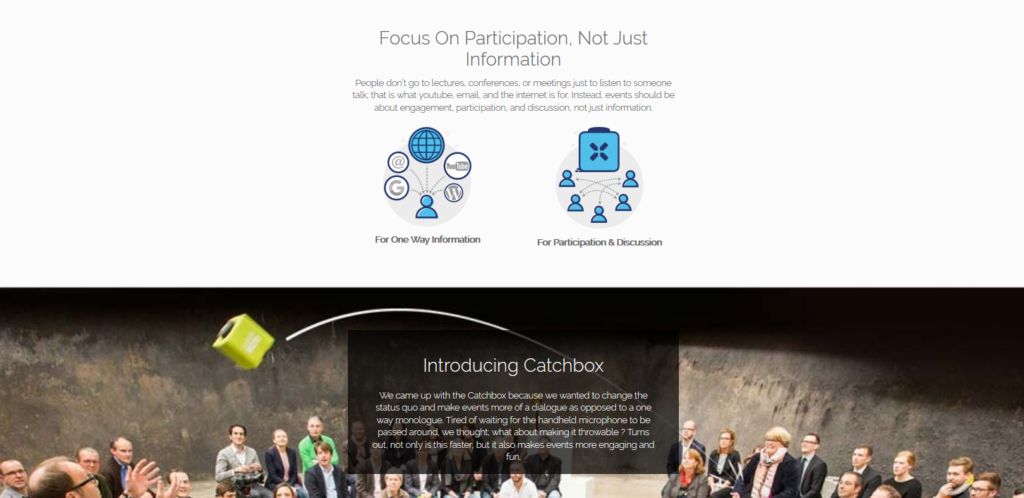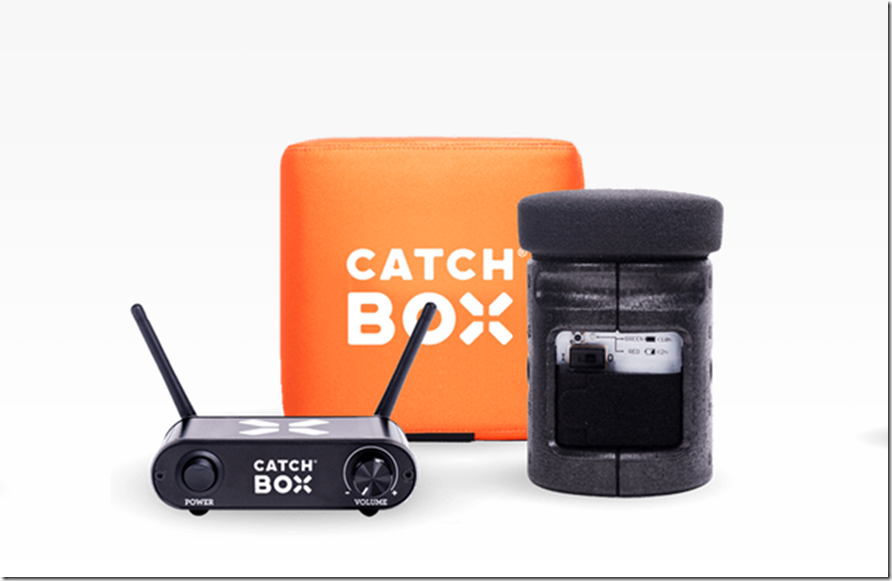Catchbox: A Great Way To Engage Your Audiences
The Q&A period at large-group presentations usually adheres to a rather standard format: the speaker opens the floor to questions and an audience member either approaches a centrally placed microphone or waits for a microphone to be passed down the aisle.
A couple of recent clients have been using a product called Catchbox, described by the company as “the world’s first throwable microphone.”
Just reading that phrase may have already triggered a thought or two for you about how you might use Catchbox to improve your presentations. It’s easy to see how it could add a dose of fun and unpredictability to your talks while breaking down any unhelpful perceptions of formality.
Note: I have no financial ties to or any established relationship with Catchbox.
Here are a few uses that immediately come to mind:
- Keynote speakers could toss Catchbox from the stage to an audience member
- Your colleagues managing the floor could toss it into the inside seats from the center aisle
- Audience members could toss the Catchbox to their fellow audience member asking the next question
- Professors could wake up sleeping students by tossing a Catchbox to them without warning and asking them to answer a question (at least one California school district is trying Catchbox, albeit in a more friendly manner)
- Bosses could promote a more egalitarian spirit by empowering the person with the Catchbox to hold the floor until they yield the box
Long-time readers of this blog know I don’t recommend products based on their “cool factor,” but rather on their contribution to the best practices of public speaking. Catchbox passes that test with flying colors — in addition to being rather cool.
Using Catchbox can be a clever way to “break the pattern,” which great speakers do frequently throughout a presentation to hold audience attention. When the device gets tossed — particularly for the first time — anyone whose focus may have drifted will immediately detect the change in their environment and snap back to attention.
The Catchbox is also a great tool to signal transitions — both to the audience for questions, comments, and interaction — and from the audience back to the speaker, who can request the Catchbox back toward the end of the presentation to mark the beginning of closing comments.

Marketing material from the Catchbox website
If there’s any downside, it’s one that’s not of the company’s making. Part of the product’s initial power is its novelty. Audiences who’ve never seen it before will likely buzz about it following your presentation. But after they’ve seen it before, the newness will have worn out. That doesn’t mean you shouldn’t use it once the audience has seen it, but rather that you use it as a strategic tool designed to achieve a specific purpose — not as a gizmo with the sole intention of using impressive technology.
Costs begin at $399. The product is compatible with many sound systems and computers, and buyers can customize the look of the box to extend the visual identity of their brand.




Dan Gilbert uses these in his QuickenLoans and related companies all-day “ISMs” orientation for all new employees, typically 1,000 at a time at Detroit Cobo Hall. Has floor people for the boxes. And users throw around the hall to each other to great participation and engagement effect. Gilbert is amazing and does about six hours at the packed day himself. Never a boring moment. 😎🙏
That’s great feedback, Leland, thank you for leaving the comment! I’m glad to hear that this technology is being put to good use and having its intended effect.
Be well!
Brad